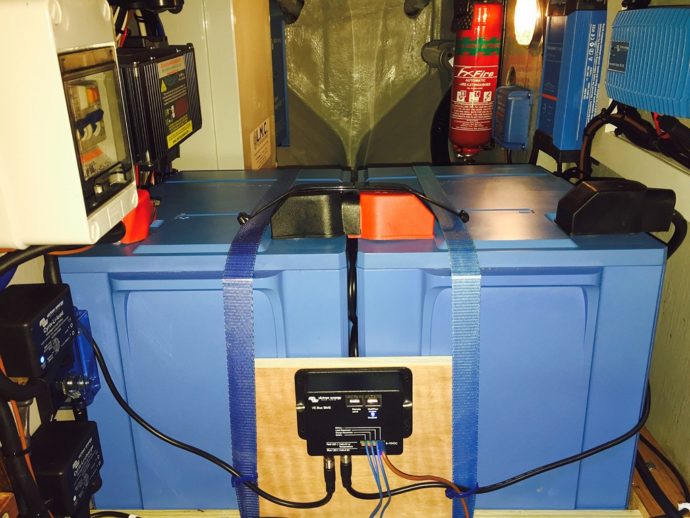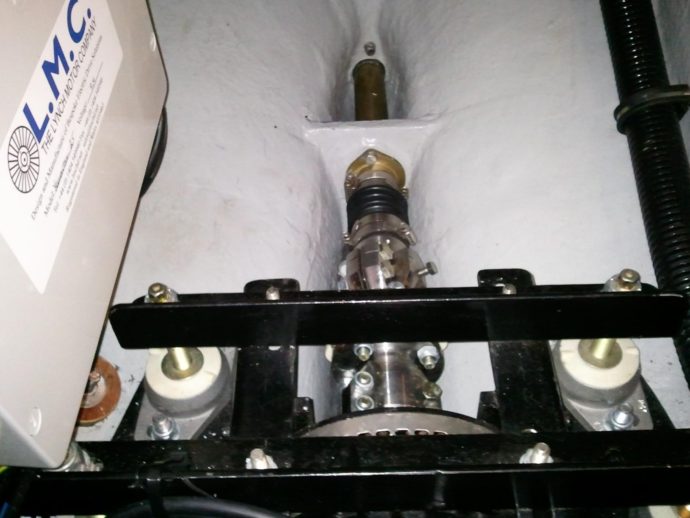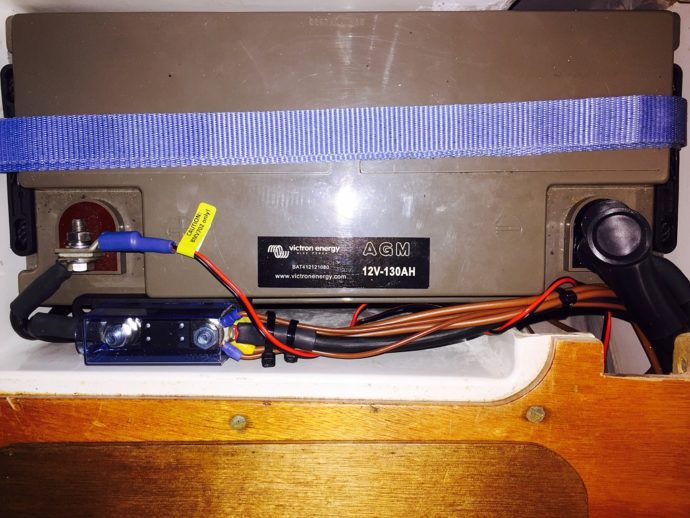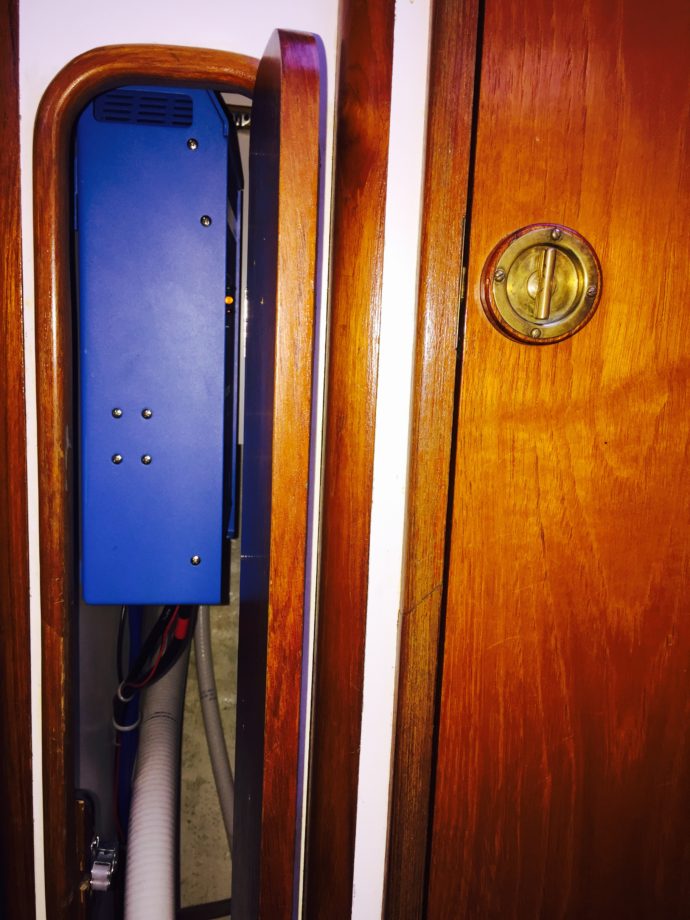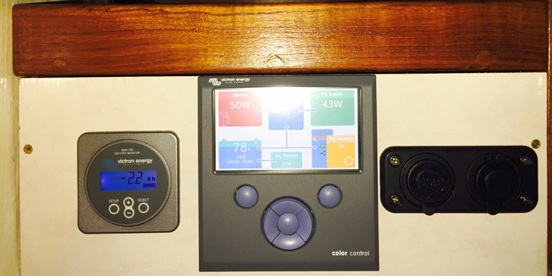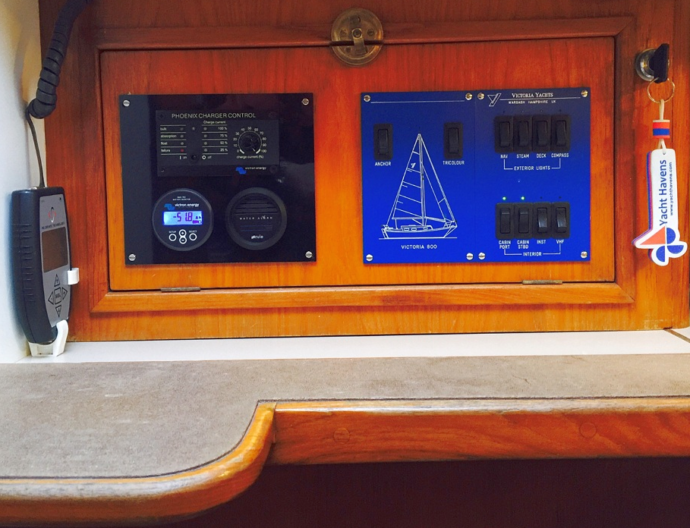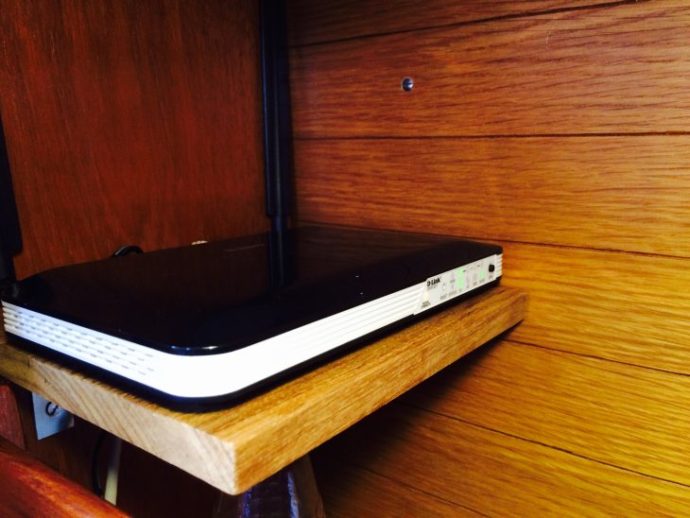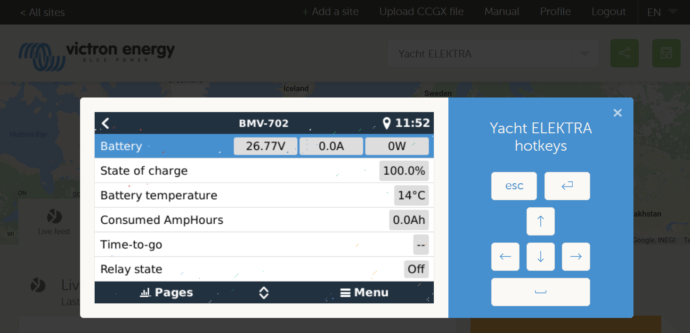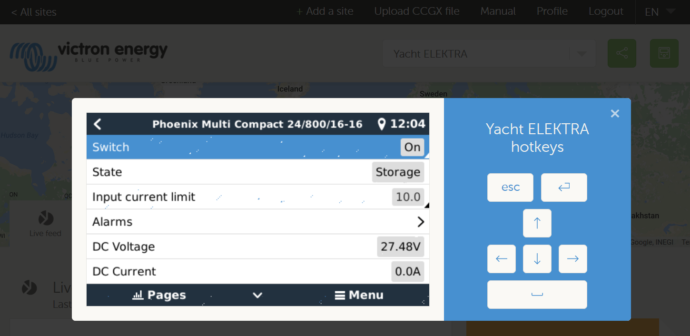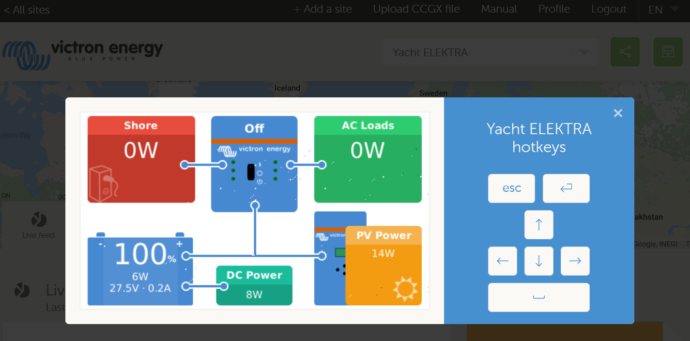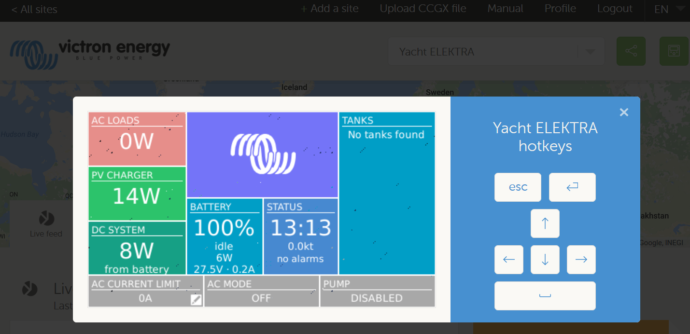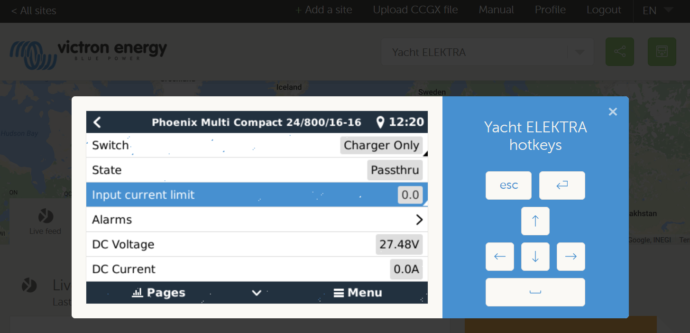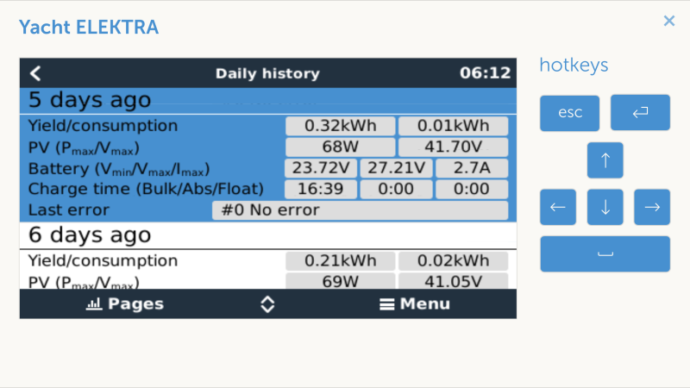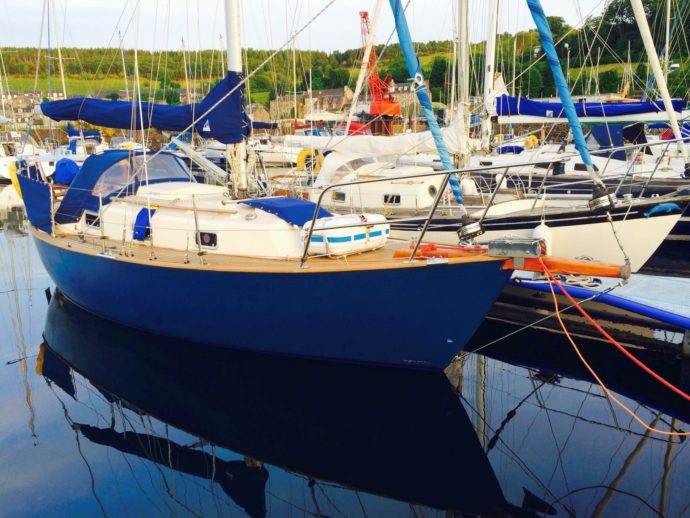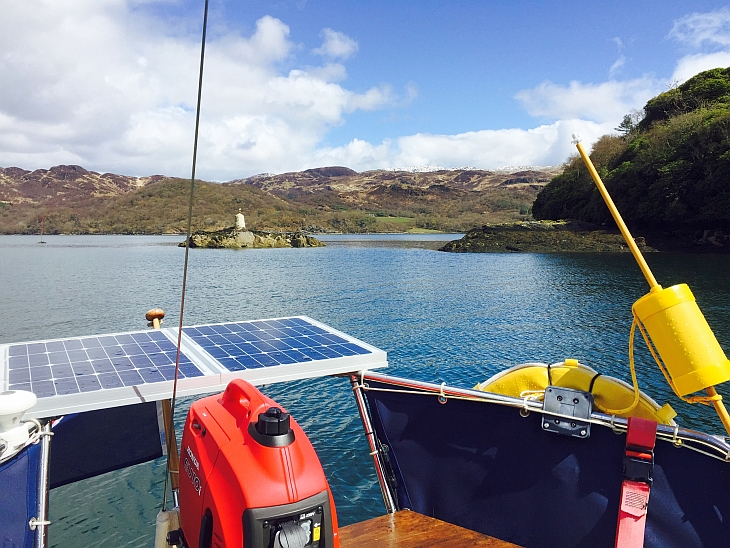
Have you ever tried to explain to an end user or friend what a Victron Energy MultiPlus is? When that happened to me, it was quite some time before I realised the true value and capabilities of one integrated product that combines both a battery charger and inverter – a product I may add that is far more than the sum of it’s parts.
Up to that point I had simply assumed I would add a separate charger and inverter to my sailing yacht as funds and needs dictated. How wrong I was. Of course the same can be true for other off-grid/sometimes grid connected situations. It might be a campervan, motorhome, RV, canal barge, Tiny house or a cabin in the woods.
Victron and RV aficionados Chris & Cherie of Technomadia describe the MultiPlus best I think, calling it a ‘Hybrid Inverter’. In fact they have produced some excellent videos about their own projects which describe the Multiplus well, and how they use it. More about that later.
First a bit about how I came to integrate a MultiPlus into my boat and what I mainly use it for, including using it as a short term electric propulsion booster or range extender. If that depth of reading detailed below is not your particular interest, then maybe skip to the videos at the end of this blog for a quicker insight into Multiplus magic.
End user choices
I’m initially a retail customer that chose to use Victron products long before I started maintaining this blog. That choice was because Victron had a complete range of the products I needed (along with good online technical information and support) without having to go to multiple suppliers. I also liked the idea that their products integrated and I could easily add/combine them as my personal boat project progressed and funds permitted. A modular, progressive build.
First a bit about that, then more about my favourite components: the MultiPlus and Color Control GX combined with the terrific performance of Lithium Ion batteries.
Then and now
What started off as a few large AGM batteries at 24V, a charger, a battery monitor and a DC-DC converter (for 12V house loads) when converting my sailing yacht to electric propulsion – has over the last five years expanded into a comprehensive solution. Here’s a photo of the old diesel engine space as it is now. There’s a lot of Victron blue.
The photo shows 2 x 12.8V 200 Ah Lithium-iron-phosphate (LiFePO4 or LFP) propulsion batteries with cell balancing and BMS (shown centre). From front to back, starting on the left – Cyrix load & charge under/over voltage cut off relays, 200 Amp main fuse. Top left 1 x 10A and 1 x 6 A 230V shore power breaker with galvanic isolator (I didn’t realise Victron made a galvanic isolator when I bought that), then the PWM electric motor controller box with a BMV-702 shunt fitted inside and a 600 Watt Phoenix charger (for the LFPs) behind that. Right from front – 12 A extra charger for the 24V x 130 Ah AGM house bank, 16 A extra charger for Lithium propulsion bank, 75/15 MPPT Solar Charger Controller to run my 4G router which accesses the Victron VRM site, a 50Watt tube heater (behind the auto fire extinguisher) to keep moisture at bay in the propulsion space.
Out of sight, behind the batteries, is the L.M.C/Lynch electric motor, controller and propulsion drive train. The project is all my own work. Not too bad I hope for an ex Royal Navy steam engineer who is mostly mystified by electrics and electronics.
More power needed
As I got use to my original basic system I realised I needed more battery power for house loads (a small fridge for cold beer to be precise) rather than tapping off the propulsion bank using a DC-DC converter. Space as you can see is limited but fortunately I had other space under the port and starboard bunks where the old diesel flooded lead acid starter battery and house battery use to be. To keep voltage drops and wire sizes to a minimum I decided to go 24V. My house loads system now comprises;
- 2 x 130 Ah AGMs in series fitted with BMV-702 temperature monitoring probe
- 1 x Compact 24V/ 800Watt/16Amp Multiplus
- 1 x BMV-702
- 1 x Color Control GX (which also monitors the LFP propulsion bank as well as the house bank)
- 1 x Orion 24/12 40 Amp DC-DC converter for house loads
- 2 x 30 Watt Victron solar panels (shown in headline image) to help run my 4G router 24/7
- 1 x 75/15 MPPT solar charge controller
To bring the charge rate of the house bank up to around 0.2 C of it’s 130Ah capacity (130 x 0.2 =26 Amps) I added a Blue Power 24V/12A IP67 Battery Charger which when added to the 16 Amps of the Multiplus gave me a combined and decent charge rate of 28 Amps for the house bank, without going to the expense of a larger Multiplus than the 800 Watts output (700 Watts continuous @ 25C) I chose. This also gave me the added bonus of charger redundancy and choices for slower and faster charging.
Why a small MultiPlus?
Simple really, space and finances. However there is a little more to it than that. Whilst the former is true and that limited the size of the Multi and the batteries, I simply didn’t need the inverter side to be more than 800 Watts. That size also complimented the 130 Ah rating of the batteries.
Keeping the ‘shrinkage’ of AGM batteries to a minimum when considering Peukert’s law is always a good idea when using an inverter for short term higher loads. I also prefer these kind of batteries in series rather than parallel for safety, not to mention that running the bank at 24V rather than 12V keeps wiring sizes smaller. For continuous house loads it is always a good idea to have the loads equal to or smaller than the 20 hour rating of the battery.
In my case the continuous loads when sailing are usually no more than 4 Amps (4 x 12=48 Watts). At 24V that’s only 2 Amps being drawn from the house battery. As the 20 hr rating of the 130’s is 130 x 0.05= 6.5 Amps, I have a genuine 130 Ah bank rather than any reduction/shrinkage in Ah due to Peukert.
Inverter appliances
As mentioned above there were good reasons for choosing a smaller Multi, but what about the type of appliances you might run from an inverter? Some might be long term loads such as a laptop running on an AC supply. That of course does not present a problem as a laptop might only be 45 Watts. But what if you want to run a kettle for example, a larger short term load. My solution was simply to specify the appliances based on inverter size rather than have a larger inverter for typical larger sized home appliances, which would not be good for a small house bank anyhow. The ‘higher’ loads and appliances I run from and via my 800 Watt Multi are:
- 600 Watt travel kettle
- 750 Watt toaster
- 700 Watt George Foreman type grill
Of course this means you can only run one appliance at a time – or does it?
Also the AC output of the Multi can supply:
- 30 Watt electric blanket (it gets cold in Scotland!)
- 45 Watt Laptop supply
- 288 Watt (12 Amp) Blue Power 24V/12A IP67 (House) Charger
- 384 Watt (16 Amp) Blue Power IP22 (Propulsion) Charger
- 600 Watt (24 Amp) Phoenix (Propulsion) Charger
Why on earth would you want to charge or supply the LFP bank using the two propulsion chargers from the MultiPlus house bank batteries you may wonder, by using the inverter side of the Multi? Yes, it would be inefficient but there’s a very good reason.
What about the desire to have coffee and toast at the same time, which exceeds the MultiPlus inverter rating? All the above can be done with the magic of the MultiPlus and a small generator.
MultiPlus magic
Onboard, as shown in the headline image, I have a small Honda Generator of the silent or suitcase type. It is a 1 kVA or rather 900 Watts continuous. Honda also do a 2kVA which uses the same 50 cc engine running at a higher (noisier) speed and output. The continuous output is 1,600 Watts and as it costs 50% more than the smaller one it made sense to me to choose the latter. That’s not only because of value for money but also because I only ever have short term requirements for higher loads. There’s no point in running a larger generator if it’s not loaded to capacity, as that is inefficient.
Let’s say I’m anchored and have been away for a few days and want to put some charge into my propulsion LFP bank using the Phoenix and IP 22 Charger, which combined can supply 984 Watts or more (1,100 Watts in fact in bulk) to the Lithiums. I can also adjust to a range of charge currents with the Phoenix Charger Control shown below.
If I run the generator there is 900 Watts available to the Multiplus for a combination of charging the house bank from the Multi’s inbuilt 16 Amp charger (384 Watts) and/or using any of the AC appliances stated previously. So, I run the generator and it’s partially loaded by the 384 Watt inbuilt charger and 16 Amps is going into the AGM house bank in bulk charge. Clearly that leaves me power to use. But it’s the LFP bank I want to charge and not the house bank. Switching on both the LFP chargers and by adjusting the Phoenix Charger Control I can set the LFPs to use the full 900 Watts of the generator, at which point the Multi reduces it’s charge current to nil to the house bank, if the Multi’s main switch is in the ‘On’ position (inverter available) and the charge current limit is set in the Multi to 4 Amps using the Color Control. This stops overloading the generator (230V x 4 = 920 Watts). See this blog about that new overview screen.
But now I want coffee and toast and still to put some charge into the propulsion LFP bank. Coffee and toast will cost me a total of 1,350 Watts, but I’m already using the full 900 of the generator. What to do, as all that totalled up is 2,450 Watts. Clearly sacrifices have to be made.
I switch off the Phoenix leaving the IP 22 Lithium charger on at 384 Watts. The generator load has decreased from the full 900 Watts and now the Multi is charging the house bank too and the LFP bank (384 + 384 = 768 Watts). Time for coffee, which will exceed the 900 Watts the generator can supply (768 + 600 = 1,368 Watts). When I switch on the 600 Watt kettle a seamless fast transfer switch built into the Multi kicks in and the house bank starts discharging to supply the inverter to add to the generator power. A maximum of 900 Watts from the generator plus 700 Watts (continuous) equalling 1,600 Watts is therefore available, by combining the small generator and the Multiplus. Small generator, big power.
The moral of all this is to size your generator to take care of longer term loads, which allows you to fully load the generator for efficiency. And when short term higher loads are required – simply use an appropriately sized battery bank and Multiplus which gives the additive power of a generator and the inverter part of the Multiplus. That’s Multiplus magic.
MultiPlus with a Color Control GX
These two products really are perfect partners and they allow me total control and monitoring in a way I only dreamt of a few years back.
Say I’ve returned from a weekend away sailing and both my house and propulsion banks are quite depleted. Plugging into the marina 230V/16A shore supply; all my chargers go on. Around 1,100 Watts to the propulsion bank and around 700 Watts to the house bank, run from a 10 Amp/230V breaker supply via the Multiplus and a bank of AC sockets . The Multiplus and chargers are using a total of 1,800 Watts leaving around 500 Watts spare. As this is a Multiplus there’s still room to boil that 600 Watt kettle, make a toasted sandwich and plug the laptop in! That’s the beauty of the ‘Power Assist’ feature of the Multi. To allow that I simply set the current limit in the Color Control to 10 Amps so that the 10 Amp breaker supply will not get exceeded and trip that breaker.
That all leaves a separate 6A breaker and sockets for a straight AC supply of around 1,380 Watts for a small fan heater and/or power tools.
Quite often by the time I’ve done some chores the propulsion bank is fully charged and the house bank is still labouring in absorption charge. That is one of the joys of Lithiums; fast charging to around 98%, whereas the house bank will have slowed it’s charge rate down at around 80% SOC and gone from bulk to absorption. There will be quite some time that will need to elapse before float and storage are reached; one of the downsides of lead acid technology such as AGM. Not so with Lithiums as they charge fully quickly and/or they can be left in pretty much in any state of charge. However with a Multiplus, Color Control GX and an internet connection there is simply no need to concern oneself about battery SOCs, as you can leave the boat at any point and control the system remotely via a Smartphone or Laptop. This is called ‘Remote Console’.
To achieve that I have a D-Link DWR-921 4G LTE router as shown below, which ensures 24/7 connectivity and data logging via the VRM. It runs from a 12V DC supply, rather than the 230V supplied transformer.
Tips & tricks
As the Lithiums are often fully charged by the time I leave the boat (having taken them from 98% to 100% for around an hour which ensures cell balancing) I simply switch off the BMS as the Cyrix load relay takes a few Watts and would discharge the bank a little before the next sail. I have also wired the BMV-702 & Shunt on the load side of the load relay. This means there is always a very slight current to keep the relay closed, meaning the power is always available for electric propulsion when the electric motor ignition key/solenoid is switched on. On an electric propulsion boat you always want power there immediately and not have to wait 30 seconds for a Cyrix relay to close! The bank is still protected and monitored for temperature, under voltage/over discharge and over voltage/over charge.
The extra connection on the BMV-702 (as opposed to the BMV-700 which doesn’t have one) is used for temperature monitoring, rather than for a non existent starter battery or Battery Balancer that you may choose to use in a conventional system. A VRM Remote Console (via a laptop rather than the App) screenshot is shown below with the temperature of the Lithiums as I write. You’ll also notice in the top right, next to the time, a symbol. This shows that a GPS dongle is connected to the Color Control, which apart from logging your tracks can be set with a Geofence and an email alarm – just in case some opportunist decides to steal your pride and joy.
If I were leaving the batteries over winter layup for many months, I’d probably leave the Lithiums at around 60% SOC. During the season though I like to have them fully charged and ready for use. You never know when the wind will blow and the sun will shine!
The Multiplus has 3 switch positions on it’s front panel. By leaving the switch in the On position all control can be done directly from a Color Control GX:
MultiPlus On – The charger is on and the inverter is available subject to the current limit set either via a Digital Multi Control or the Color Control. The image below shows my house batteries in ‘Storage’ and the current limit set to 10 Amps. There is a downside to this though if leaving the boat unattended. If the shore supply fails and say I had my engine space AC 60 Watt tube heater on, the inverter will kick in and over time deplete the house bank. Of course you can set email alarms to warn you of this or fit a Battery Protect to disconnect the house bank.
Multiplus Off – Exactly what it says, shown in the screenshot below showing the primary Overview screen. Charger and Inverter and AC sockets are all off. Now my 2 x 30 Watt Victron solar panels in series with the 75/15 MPPT is enough, during the Summer months, to maintain the house batteries in a good state of charge with the 24/7, 8 Watts that the router takes to keep the system connected to the VRM.
Here’s an alternative Overview screen shown below which gives similar information to that above plus access to Current limit settings and other information. Note the GPS speed readout in Knots. It can be set for other speed units too.
MultiPlus Charger Only – I use this a lot in the marina and set the current limit to zero which stops the charger and inverter side and gives Passthru to the AC sockets. That way if the tube heater is on it will work if the shore supply is on and obviously not deplete the batteries (by using the inverter) were the shore supply to fail.
Below is an example of a very good solar day. The 2 x 30 Watt panels are laid flat (see headline blog image) and in this instance I’ve harvested 320 Watts over a 24 hr period. That’s over over 5 times the panel rating harvested at 56 degrees latitude. Even the peak output exceeds the panel rating, 60 v 68 Watts. Average stored battery energy over the Summer months of May, June July usually works out at 2.5 times the panel/s rating in the UK. That of course is for a flat panel, as boats naturally move about and having an x and y axis tracker is not that beneficial in Summer, as it may only give me about 10% more harvest.
Remote console via the VRM (used to get the screenshots above) is a great tool to control and monitor systems and of course there is always the option to store data locally if you are without an internet connection for your Color Control. Sure you won’t have Remote Console and other tools, but if all you want to do is see historical data after having uploaded it to the free VRM site, then no internet connection is required. Personally I wouldn’t want to be without a Remote Console connection when away from the boat. Obviously an internet connection is not such an issue when at sea, as data is stored on the Color Control internal drive or by using an inserted MicroSD card for larger offline data amounts. As soon as the boat is back within a 4G area the backlog data automatically uploads.
To learn more about the Color Control & VRM, see Victron Live and why not create an account at Victron Professional:
Silent range extender
One last scenario. The propulsion bank is nearly empty at sea but there’s still quite a bit left in the house bank and the generator is broken. I’ve sailed almost back to port but still need propulsion power for those last few miles. With the Multi on I can switch on the Lithium propulsion chargers; the house bank using the inverter side of the Multi will supply those chargers and therefore a short term electric propulsion boost to the empty Lithium batteries. Inefficient that might be, but to me that’s all good built in system redundancy using off the shelf products to provide a silent range extender in the event of generator failure for yacht Elektra.
Of course if the generator is working then I can simply use the propulsion chargers and the full output of the generator (900 Watts) to run as a range extended battery electric boat, as opposed to a pure battery electric boat. This is my backup at sea and 5 litres of petrol is enough for 10 hours of motoring in calm waters, at around 3 to 3.5 knots. Of course the whole idea of electric propulsion is to do without any internal combustion engine, hence I invariably recharge at marinas and keep my generator as a backup for those times when a marina is not nearby.
What about other users other than the marine world; such as full time RV’ers?
More MultiPlus magic
Earlier I mentioned RV aficionados Chris & Cherie of Technomadia and some excellent videos they have produced about their own RV, which describe the Multiplus well and how they use it.
- Big RV: Small Generator – Downsizing to a 2500w Propane Generator
- Flexible RV Electrical Systems – Running an AC Off Battery, Solar & Hybrid Inverter
Conclusion
If you have a story about how you’ve used Victron Energy products do let us know. Thanks to Chris & Cherie of Technomadia for letting me use their videos in this blog.
